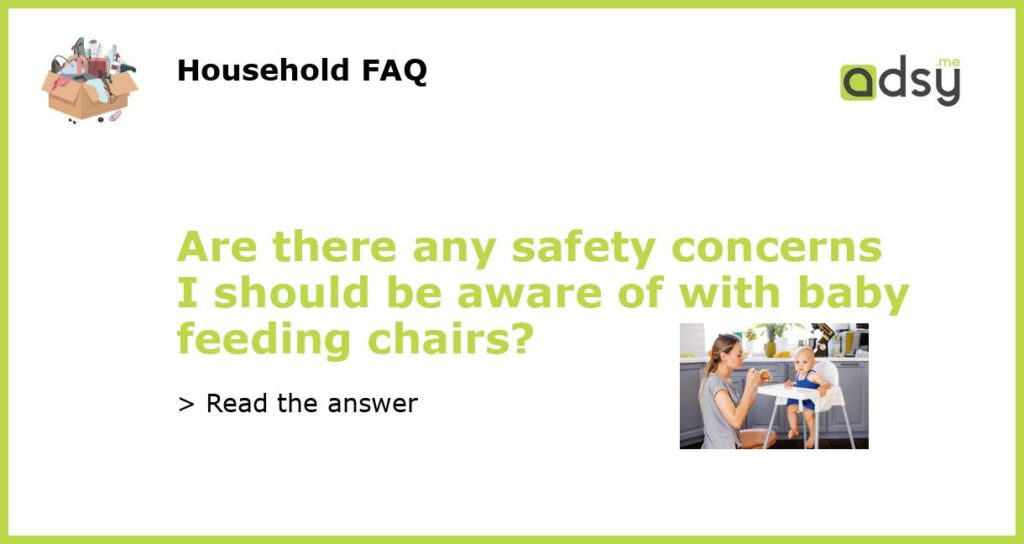Safety Concerns with Baby Feeding Chairs
Baby feeding chairs are popular among parents as they offer comfort and convenience during mealtime. However, many parents overlook the potential safety hazards that can arise from the use of these chairs. In this article, we will discuss some of the safety concerns that you should be aware of when using baby feeding chairs.
Sturdiness and Stability
One of the most important safety considerations of a baby feeding chair is its sturdiness and stability. These chairs should be able to support the weight of your child without tipping over. It is essential to check whether the chair has enough balance or not. You should also look out for slipping or sliding of the chair and its components. Make sure the chair has locking mechanisms and a wide base that can give enough support.
Straps and Restraints
Most baby feeding chairs use straps and restraints to secure your child during mealtimes. Make sure the straps are not too tight and are adjustable as your child grows. The restraints should also be easy to use and have locking devices that keep your child in place. Avoid using chairs that have any loose or broken straps that could pose a risk to your child’s safety.
Material and Structure
The material and structure of a baby feeding chair can also be a safety issue. Check that the seat and backrest are soft and comfortable but not too plush or easily deformable. Chairs with too much cushioning may not provide adequate support and can potentially suffocate your child. Also, avoid chairs with sharp edges, rough surfaces, or small components that can break and become choking hazards.
Height and Positioning
The height and positioning of the chair are important safety considerations. Make sure the chair is the right size for your child and that their feet can touch the ground or footrest. Avoid chairs that are too high or low or unstable. Position the chair away from sharp objects and surfaces that could pose a risk if your child falls or moves around.
Care and Maintenance
Caring and maintaining your baby feeding chair is essential for its safety and longevity. Regularly clean the chair and its components, checking for any signs of wear and tear or damage. Make sure to follow the manufacturer’s instructions and avoid using any accessories or modifications that are not compatible with the chair. Proper maintenance can help prevent potential safety issues from arising.
While baby feeding chairs can offer convenience and comfort during mealtimes, they can also pose potential safety hazards if not used correctly. Make sure to check the sturdiness and stability of the chair, as well as the straps, restraints, material, height, and positioning. Proper care and maintenance can also help prevent any safety issues from arising. Always prioritize your child’s safety and consult with a pediatrician or baby care expert if you have any concerns.






